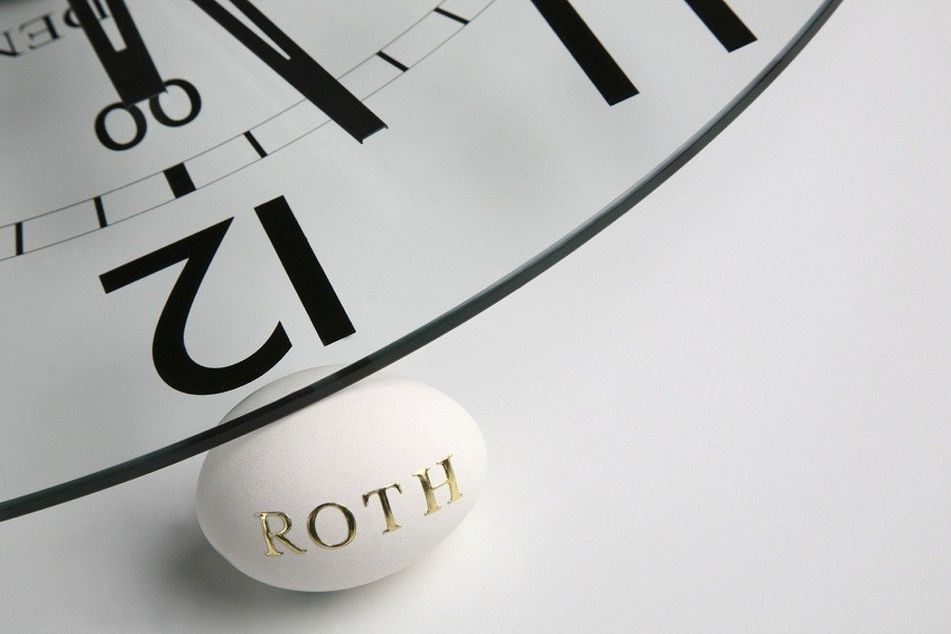3 big reasons to do a Roth conversion right now

The time is ripe for many to convert a pretax IRA to a Roth.
Lower tax rates, a slumping stock market and the time of year offer pristine conditions for financial advisers to do a Roth conversion with clients.
Roth conversions allow clients to convert all or a portion of their traditional, pretax individual retirement account assets into a Roth IRA. Clients pay the tax upfront in exchange for tax-free distributions later.
The 2017 tax law reduced tax rates for the majority of Americans this year, meaning many clients would pay less tax on a conversion. A drop in market values for IRA holdings yields a similar result, since the tax would be calculated on a reduced asset base.
Further, since it’s the end of the year, clients have a clear picture of their total income for 2018. This is important because a Roth conversion would increase a client’s taxable income, and could inadvertently push them into a higher tax bracket.
“It’s a triple benefit,” said Ed Slott, an IRA expert who heads an eponymous retirement advice firm.
The tax law, signed by President Donald J. Trump in December 2017, reduced marginal income tax rates across the board, bringing down the top bracket to 37% from 39.6%. Not all Americans will fall into a lower bracket now, though — some taxpayers previously in the 33% bracket are now in the 35% bracket, for example, due to a change in income levels associated with the brackets.
Aside from reduced marginal rates, married couples filing jointly get an added benefit — the elimination of the so-called “marriage penalty.” Under previous rules, a couple with combined income exactly double that of a single filer often moved into a higher tax bracket than the single individual. The new law puts them on more-equal footing.
Consider the new 24% tax bracket, covering married couples filing jointly with taxable income between $165,000 and $315,000. Most of that income would have been taxed at 33% and some at 28% under the prior rules, making it less expensive for these married couples to do a Roth conversion now, said William Reichenstein, professor emeritus of investments at Baylor University.
There’s some urgency to acting on Roth conversions sooner rather than later — individual tax rates are set to revert to the prior (higher) rates after 2025, and could potentially change sooner, depending on the outcome of forthcoming presidential and congressional elections, experts said.
The tax law also eliminated the ability of taxpayers to “recharacterize” — or undo — their Roth conversions, making the end of the year a more prudent time to do a conversion, experts said.
“You have a much better handle on what your income will look like for the year and can pretty much nail down the cost of your Roth conversion,” said Tim Steffen, director of advanced planning in Robert W. Baird & Co.’s private wealth management group.
This all combines with the market’s recent lackluster performance. The S&P 500 was down 1.52% for the year as of last Friday’s close.
“You can’t wait around for the market to dip further” to do a conversion, Mr. Slott said. “You’ve got a bird in the hand now, so you should probably take advantage.”
Of course, clients shouldn’t consider Roth conversions in a silo — there are a number of other factors aside from the conversion tax.
Robert Keebler, founder of Keebler & Associates, said he thinks about them through four lenses: how a conversion will affect a client’s tax bracket today, how it would affect a client and spouse at age 70½ (since conversions could help reduce future required minimum distributions), a client’s tax bracket if a spouse were to die (would doing a conversion now be cheaper than as a single tax filer?), and the children’s tax situation (will the client be able to convert at a lower tax rate than a child, thereby creating a better wealth transfer?).
There are a few other caveats, too. Clients need to have cash on hand to pay the resulting conversion tax. And the ability to take some tax deductions could be impacted by a conversion if it bumps income too high. For example, owners of many pass-through businesses can’t claim the new 20% pass-through deduction if taxable income exceeds $315,000 (married filing jointly).
Making a conversion also could inadvertently increase future Medicare premiums, which are based on modified adjusted gross income (adjusted gross income plus tax-exempt interest) from the two calendar years earlier, Mr. Reichenstein said. For example, jumping above the $267,000 MAGI threshold costs an extra $2,424 in annual Medicare premiums for married couples (if both spouses are covered by Medicare Parts B and D).
Learn more about reprints and licensing for this article.








